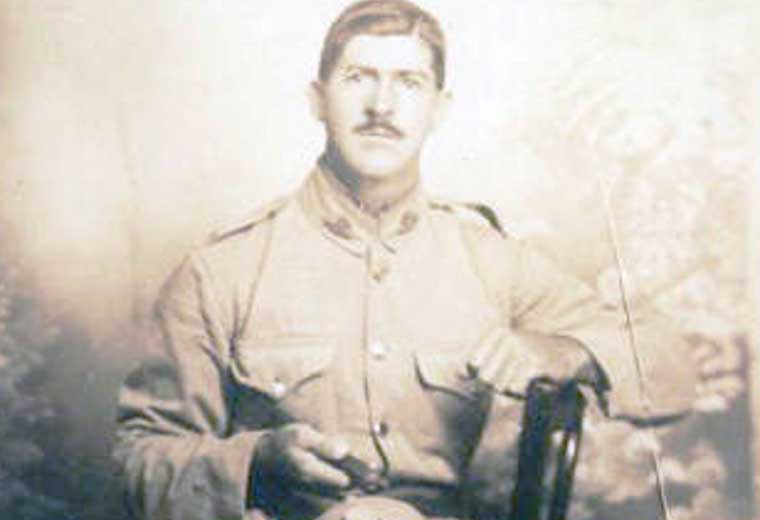Edward Lawrence Spalding volunteered during WWI. Because his profession was groom (employed in the stables at Tooheys) he was attached to the 7th Light Horse Regiment Veterinary Corps. His ship arrived at Gallipoli three days after the first landing. He also fought at the assault of Basheba Wells after travelling several days across the desert without water. He was a groom responsible for the care of the horses and held up to 20 horses whilst their riders fought the enemy. He also fought in several major battles in France and Belgium including the Somme, Pointierres and Hamel.
Edward Spalding was blinded when gassed but considered himself lucky as his sight eventually returned unlike many other soldiers who were permanently blinded.
A family in France befriended him taking him into their home to convalescence. An indication of the extent of his friendship with the family was his naming 3 of his 4 children after the couple’s children. His third child was to be named Patricia Margaret as she was supposed to be born on St Patrick’s Day. Edward Spalding named his children Joan Marie (after the family’s eldest daughter), Maurice Raymond (after the family’s eldest son), Patricia Margaret (because she was supposed to be born on St Patrick’s Day) and Yvonne Louise (after the family’s youngest daughter).
War Service Homes
Edward Lawrence Spalding received a 400 pound loan to build a War Service Home and built it in Belfield. After his side fence was built he found the nuts holding the wheels on the sulky clipped the uprights preventing the horse from pulling the sulky down the side of the house into the backyard. He then cut a 7 cm piece out of each upright at wheel level, added a piece of timber on the other side creating a “u” shape in each upright and sufficient space for the sulky to fit pass.



